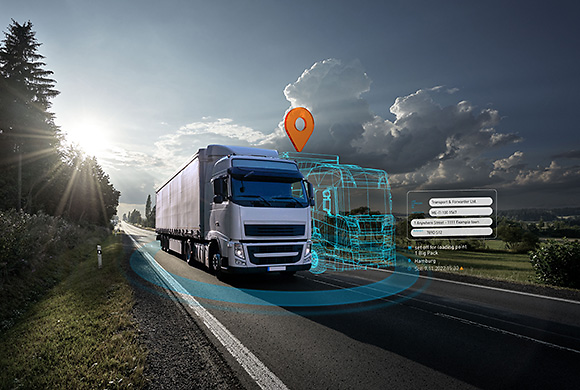Smart collaboration in the logistics industry
How to successfully engage customers in digital product development processes

Let’s be real: everywhere you look you see promises of tailored digital solutions. But which services have really been adjusted to meet customer’s needs? Or are actually developed specifically to meet them? In this blog post, we use practical examples to show what work that is truly customer driven can look like. And we go a step further and discuss smart cooperation.
“Are you ever going to add audio notifications”, was a question asked by Alan Kondracki, Smart Logistics System user, via the Facebook Messenger system. The road haulier found it annoying to have to constantly check whether there were suitable freight offers available. He wanted an ‘alarm’ that would let him know when one had arrived. “That would mean that I could concentrate on something else in the meantime, and get some work done in a different window. If a new offer arrives, I will hear it and can view it immediately, then bid on it,” Mr. Kondracki explained. After all, every second counts on the spot market.
Agile development processes start with the customer
Direct feedback from customers is what makes TIMOCOM’s System so useful. It is constantly being optimised, with new features developed regularly. “This process starts with our customers,” explains product manager David Moog. But what exactly does that mean? Customer driven software development starts by determining what the customers want. Analysts at TIMOCOM take a close look at how customers work, what they need and the challenges they face throughout the day. This information is then compiled by the user experience designer, the ‘user whisperer’, who comes up with a concept that meets these needs. The customer then receives a mock-up of the design. They can use this digital draft to try things out and ‘click around’. Factors that negatively influence user friendliness or ‘teething problems’ are recognised and dealt with early based on customer experience reports.
Fulfilling customer requests is a strategic driver
Even once new applications and functions have been released, TIMOCOM receives plenty of feedback on them via a variety of channels. “Right now there are over 1,000 ideas in our ideas pool. In order to implement these ideas into real features and applications, we create road maps, that is a clear path from A to B,” Mr. Moog reports. And of course IT teams can introduce their own ideas, and they take suggestions from employees in other departments, such as customer service. “We are committed to fostering an open-minded company culture and request feedback from all parties. It’s an essential part of agile work,”, according to Mr. Moog.
Customers vote via Instagram
TIMOCOM also makes use of social media. For example, they have posted surveys to Instagram that allow customers to vote on which features will be implemented next. According to Mr. Moog, it’s a quick and easy way to determine what is most needed at that moment. Plus, it allows customers a say in the design and development of their most important work tool. For example, the notification feature for new offers was added to the System in no time at all. The reaction was equally speedy. A user shared a screenshot of the new function in a Facebook group. The positive side effect: Over 50,000 group members were informed about the new innovation. “When customers talk to each other about new functions and the benefits they bring, it is far more convincing then simply reading about them in a newsletter,” says Mr. Moog. As in the case of the Polish user, even a small change in the System can make a huge difference to daily work processes. As Mr. Kondracki explained “you often have only a few minutes to respond to an offer in order to get the job.”
Smart cooperation as a model for the future
In the future, TIMOCOM aims to be even more agile and introduce smarter cooperation with users on an international level. This will involve presenting work that is in development as it is being developed. The customer will be consulted not just in terms of initial input and feedback afterwards – they will be integrated into the entire process. Of course this has a huge benefit for the developers as well. Prototypes can be tested based on trial and error, even though doing so runs the risk of revealing some ideas to be impractical or not yet ready for use. “We are excited to make use of the freedom this process will grant us,” saysa Mr. Moog.
